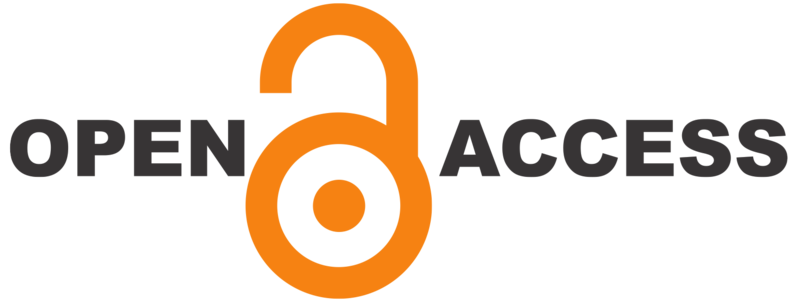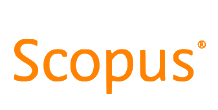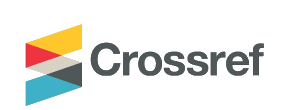Overt and covert: Successful strategies for building employability skills of vocational education graduates
DOI:
https://doi.org/10.21153/jtlge2019vol10no1art782Keywords:
employability, skills development, vocational education, workplace transitionAbstract
Knowing how well higher education providers prepare learners for the working world is becoming increasingly important at all programme levels, and this is nowhere more apparent than with vocational education training. Ensuring our learners can hit the ground running and become immediately productive is essential for the relevance, and probably the survival, of New Zealand’s Institutes of Technology and Polytechnics (ITPs). Yet while there is much commentary about the challenges of transitions from tertiary study into employment and the ‘employability skills gap’, there is all too little given to how this is being addressed in teaching. This paper describes the work of an inter-institutional research collaboration into current approaches being used to embed skills that enhance employability. Drawing on a number of frameworks and models, the research team selected ten core attributes: positive attitude, communication, teamwork, self-management, willingness to learn, thinking skills, resilience, innovation, entrepreneurship and cultural competence. The team then identified a range of strategies being used by highly commended teachers to enhance the ten employability skills: firstly, by observing classroom and online practices of 23 selected teachers from participating organisations; and secondly through follow-up interviews with the same teachers. The key takeaway of this research is raised awareness and intentionality of the overt and covert approaches vocational educators are using to enhance the employability of their students.
Metrics
References
Alsubaie, M. A. (2015). Hidden curriculum as one of current issue of curriculum. Journal of Education and Practice 6(33), 125-128.
Bedwell, W. L., Fiore, S. M., & Salas, E. (2014). Developing the future workforce: An approach for integrating interpersonal skills into the MBA classroom. Academy of Management Learning and Education, 13(2), 171–186. https://doi.org/10.5465/amle.2011.0138
CareersNZ / Mana Rapuara Aotearoa. (n.d.). The seven essential employability skills. Retrieved from http://www.youthguarantee.net.nz/vocational-pathways/employability-skills/employability-skills-framework/
Chavan, R. R., & Surve, A. Y. (2014). Assessing parameters of employability skills: An employers’ perspective. Asian Journal of Management Research, 5(2), 254–260.
Cranmer, S. (2006). Enhancing graduate employability: Best intentions and mixed outcomes. Studies in Higher Education, 31(2), 169–184. https://doi.org/10.1080/03075070600572041
Fourie, E., & Clokie, T. (2013). Recurrent themes: What communication skills do Waikato employers want from entry-level graduates? Wellington, New Zealand: 2013 New Zealand Communication Conference.
Fourie, E., & Clokie, T. (2014). The too hard basket: Communication, graduate competence, employer expectations, and teaching the ‘innate’. 26th Annual New Zealand Communication Conference.
Gerstein, M., & Friedman, H. H. (2016). Rethinking higher education: Focusing on skills and competencies. Psychosociological Issues in Human Resource Management, 4(2), 104–121.
Green, D., & Blaszczynski, B. (2012). Effective strategies and activities for developing soft skills, Part 1. Journal of Applied Research for Business Instruction, 10(1), 1–14.
Hendarman, A. F., & Tjakraatmadja, J. H. (2012). Relationship among soft skills, hard skills, and innovativeness of knowledge workers in the knowledge economy era. Procedia - Social and Behavioral Sciences, 52, 35–44.
Ishak, N. M., & Bakar, A. Y. (2013). Developing sampling frame for case study: Challenges and conditions. World Journal of Education 4(3), 1–7.
Kemmis, R. B., Hodge, S., & Bowden, A. (2014). Transferable skills in Technical and Vocational Education and Training (TVET): Implications for TVET teacher policies in. TVET@Asia, (3), 1–13.
Kinash, S. (n.d.). Strategies for educators to improve your students’ employment outcomes. Retrieved from https://graduateemployability.com/
Kinash, S., Crane, L., Judd, M. M., & Knight, C. (2016). Discrepant stakeholder perspectives on graduate employability strategies. Higher Education Research and Development, 35(5), 951–967. https://doi.org/10.1080/07294360.2016.1139555
Lee, S., & Benza, R. (2015). Teaching innovation skills: Application of design thinking in a graduate marketing course. Business Education Innovation Journal, (7 (June), 43–51.
Lees, B., Anderson, D., & Avery, B. (2015). Student conceptions of employability: A phenomenographic study. In Proceedings of the 14Th European Conference on Research Methodology for Business and Management Studies (ECRM 2015) (pp. 251–258).
Lievens, R., & E Wesseling, W. I. E. (2015). The effects of generic competences on employment outcomes. The IUP Journal of Soft Skills, 9(4), 7–25.
Lowden, K., Hall, S., Elliot, D., & Lewin, J. (2011). Employers’ perceptions of the employability skills of new graduates. London, UK, University of Glasgow SCRE Centre and Edge Foundation.
Markes, I. (2006). A review of literature on employability skill needs in engineering. European Journal of Engineering Education, 31(6), 637–650.
McEwen, B. E. (2010). Cross¬cultural and international career exploration and employability skills. In L. Waldman (Ed.), Crosscultural and international business education 2010 yearbook, No 48 (pp. 140–159). Reston, VA: National Business Education Association.
McLaughlin, M. (1995). Employability skills profile: What are employers looking for? ERIC Clearinghouse on Counselling and Student Services. Retrieved from https://www.ericdigests.org/1997-2/skills.htm
Messum, D. Wilkes, L., Peters, K., & Jackson, D. (2016). Content analysis of vacancy advertisements for employability skills: Challenges and opportunities for informing curriculum development. Journal of Teaching and Learning for Graduate Employability, 7(1), 1-15.
Ministry of Education. (n.d.). Employability skills framework. Retrieved from http://www.youthguarantee.net.nz/vocational-pathways/employability-skills/employability-skills-framework/
Ministry of Education. (2014). Tertiary Education Strategy 2014 - 2019. Retrieved from http://www.education.govt.nz/further-education/policies-and-strategies/tertiary-education-strategy/
Sarkar, M., Overton, T., Thompson, C., & Rayner, G. (2016). Graduate employability: Views of recent science graduates and employers. International Journal of Innovation in Science and Mathematics Education, 24(3), 31–48.
Schneider, Z., LoBondio-Wood, G., & Haber, J., (2003). Nursing research methods: Critical appraisal and utilisation. Sydney: Mosby Publishers.
Scott, G. (2015). Developing and assessing graduates who are work ready plus. [Keynote address to the National Tertiary Learning and Teaching conference, Tauranga: Bay of Plenty Polytechnic, 30 September – 2 October, 2015]. Available from http://ntltconference.ac.nz/
Scott, G. (2013). Improving learning and teaching quality in higher education. South African Journal of Higher Education, 27(2), 275–94.
Scott, G., Coates, H., & Anderson, M. (2008). Learning leaders in times of change: Academic Leadership Capabilities for Australian Higher Education. Sydney: University of Western Sydney and ACER.
Shivoro, R., Shalyefu, R. K., & Kadhila, N. (2017). Embedding graduate employability attributes in management sciences curricula: A case of two Namibian universities. Journal of Teaching and Learning for Graduate Employability, 8(1), 1–14.
Simona, G. (2015). Teacher training for embedding life skills into vocational teaching. Procedia - Social and Behavioral Sciences, (180), 814–819. https://doi.org/10.1016/j.sbspro.2015.02.215
TEC (Tertiary Education Commission). (n.d.). MyQ Rate my qualification. Retrieved from https://www.myq.co.nz/
TEC (Tertiary Education Commission). (2016). Tertiary education commission framework for youth and transitions. Retrieved from www.tec.govt.nz/assets/Publications-and.../Youth-and-Transition-Framework.doc
TEC (Tertiary Education Commission). (2018). ITP Roadmap 2020. Retrieved from http://www.tec.govt.nz/focus/our-focus/itp-roadmap-2020/
Wenger, E., Trayner, B., & De Laat, M. (2011). Promoting and assessing value creation in communities and networks: A conceptual framework. Retrieved from http://wenger-trayner.com/wp-content/uploads/2011/12/11-04-Wenger_Trayner_DeLaat_Value_creation.pdf
Whittle, J., Bodkin-Allen, S., & Hoffman, J. (2015). The ITP sector collaboration practices report, (April). Retrieved from https://www.sit.ac.nz/Portals/0/upload/documents/research/Collaboration Report 2015.pdf











